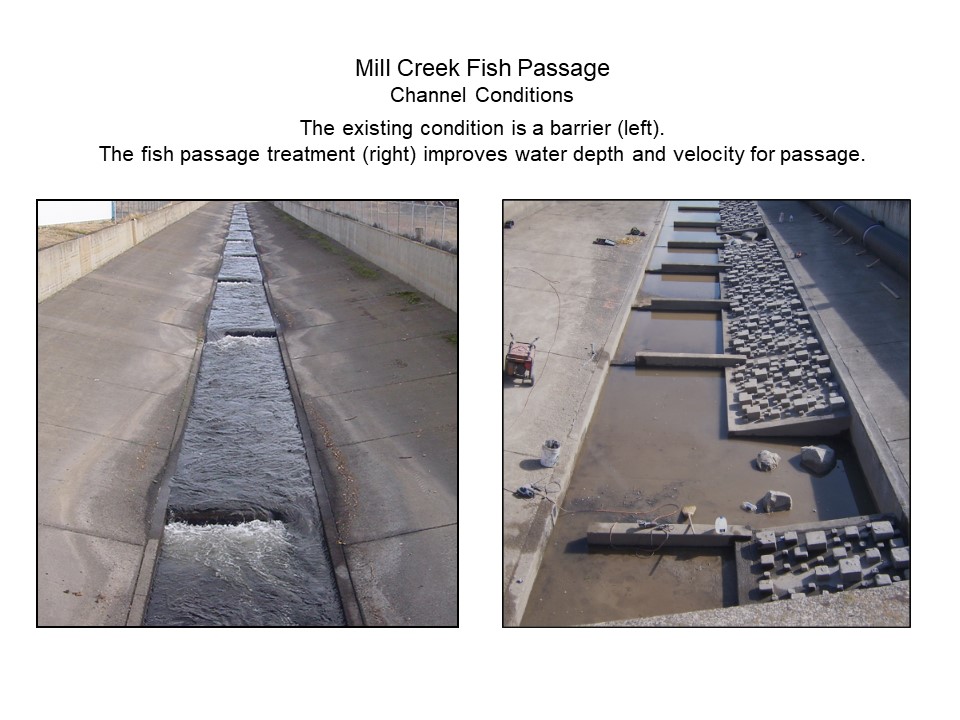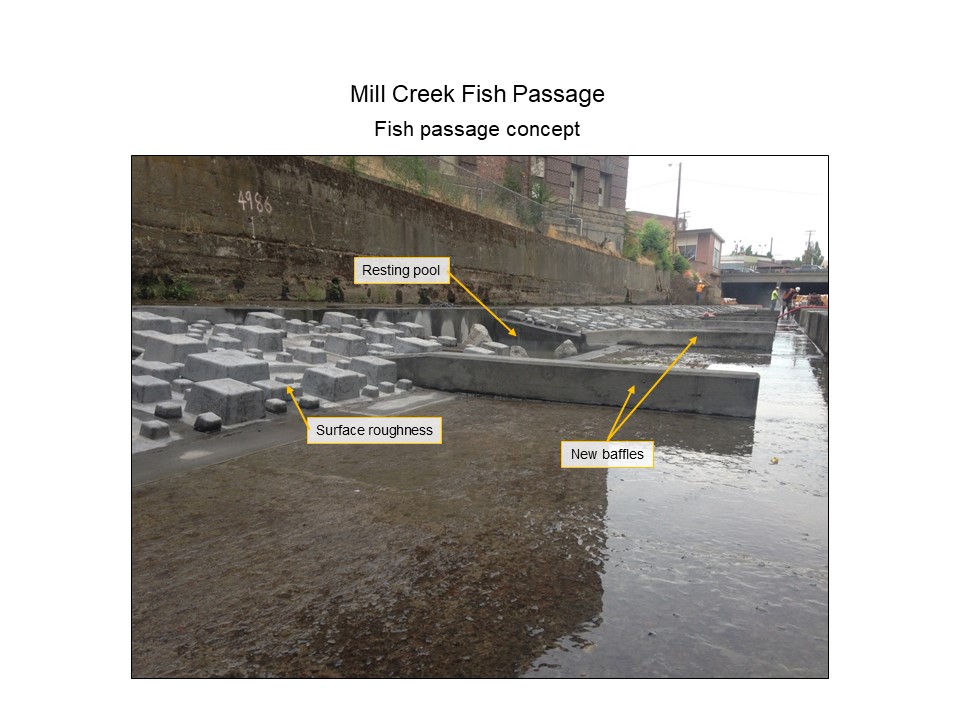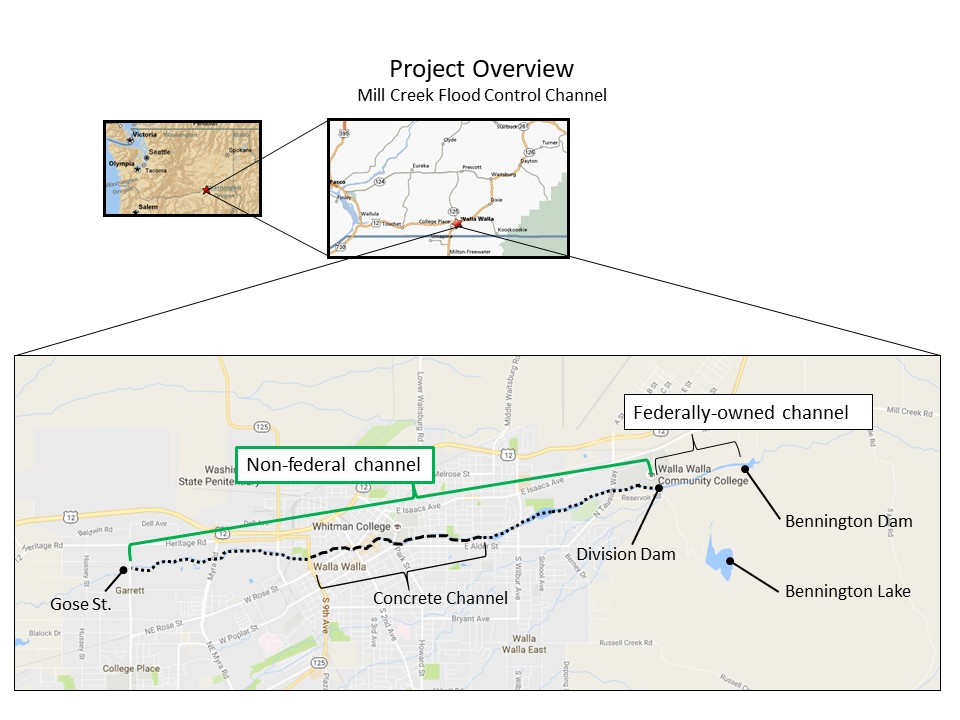The Mill Creek Fish Passage project addresses fish passage problems in about six miles of the Mill Creek flood control channel.
Links to project phases are at the bottom of this page.
Background:
The Mill Creek flood control project was completed by the U.S. Army Corps of Engineers in the 1940s. The uppermost mile of the project includes two dams and a storage reservoir and remains federal property. The lower six miles was turned over to the Mill Creek Flood Control Zone District, and is non-federal property maintained by Walla Walla County Public Works.
The six mile section includes two miles of concrete lined channel through downtown Walla Walla. Above and below the concrete channel, Mill Creek is levee-confined on both banks, with regularly spaced energy dissipating stabilizers in the channel.
The Mill Creek Work Group is composed of federal, state, tribal, city, county, and non-governmental interests. The Group started meeting around 2000, and a frequent topic of conversation was poor passage in Mill Creek. Fish managers felt that the high quality habitat in upper Mill Creek should be producing more salmonids, and believed that the flood channel conditions were a factor.
An assessment of fish passage in the Mill Creek channel was completed in 2009. It identified the location and nature of passage problems in the non-federal channel. In short, the energy dissipating stabilizers create shallow sheet flow over the stabilizers during low flow, and jump heights exceeding passage criteria for salmonids are the problems. In the concrete channel, velocities are too high during typical adult migration, and there are no resting areas. During low flow, baffles in the channel create conditions that prevent volitional passage of juveniles.
To improve passage at the energy dissipating stabilizers, a v-notch is added to the structure. This concentrates flow through the notch, providing the deepest possible water with the existing flow.
In the concrete channel, roughness is added to slow the water. The existing smooth concrete is cut and removed, and replaced with “roughness panels.” The friction with the roughness creates a zone of lower velocity that can be used by salmonids. Resting pools are added where fish can rest and regain energy. Baffles in the channel are re-configured to prevent unrestricted movement for juveniles.
“roughness panels.” The friction with the roughness creates a zone of lower velocity that can be used by salmonids. Resting pools are added where fish can rest and regain energy. Baffles in the channel are re-configured to prevent unrestricted movement for juveniles.
Project Phases:
Mill Creek Fish Passage Assessment (2009)
Mill Creek Flume Transitions (2011)
Mill Creek Sills Passage (2011)
Mill Creek Passage – Reach Type 6 (2013)
Mill Creek Passage – 9th Avenue Extension (2016)
Mill Creek Passage Design – Upper Flume (2017)
Mill Creek Passage – Park to Otis (2019)
Mill Creek Passage – Otis to Division (2021)
Mill Creek Passage Design – Spokane to Park (2022)

